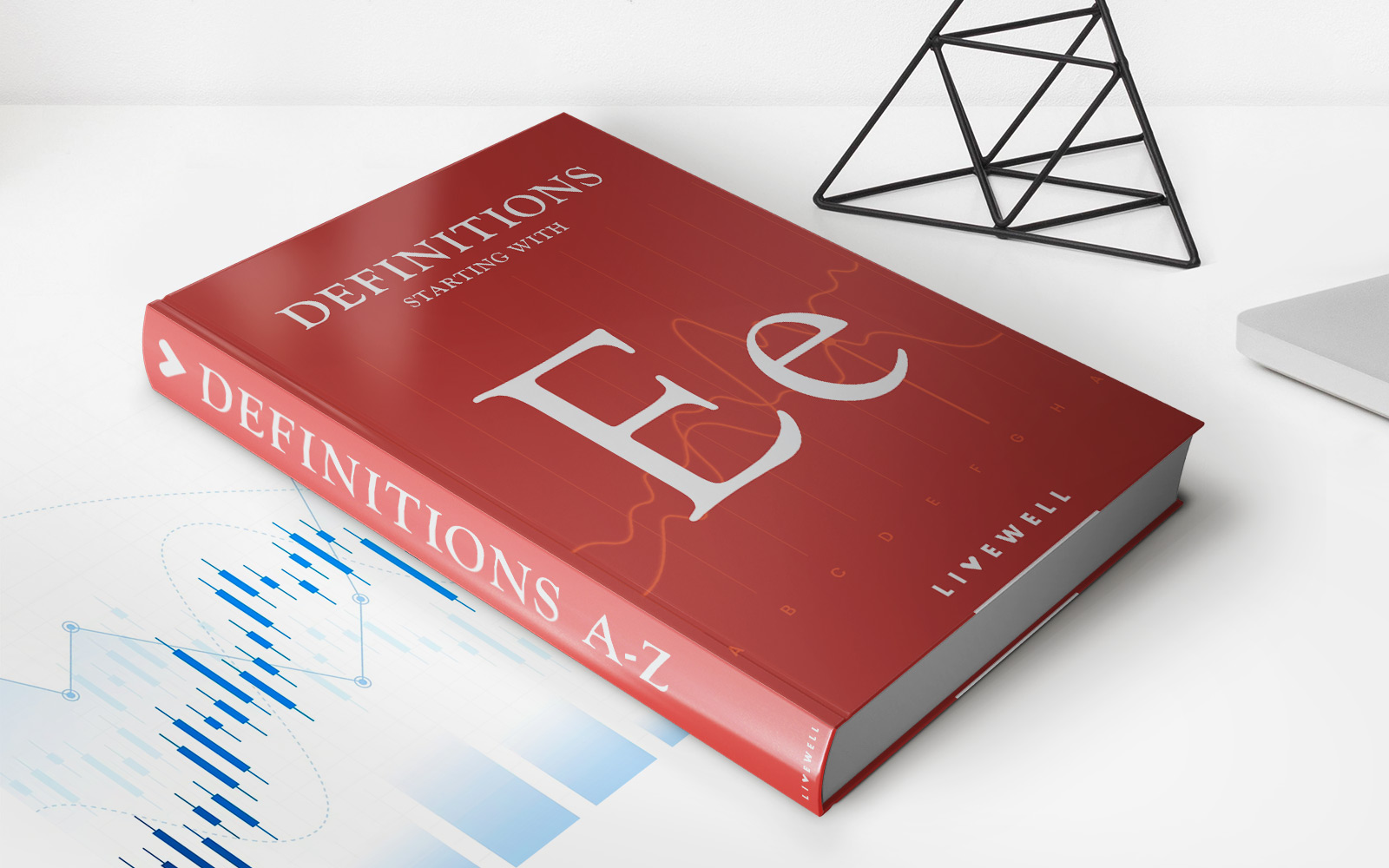

Finance
What Is Earned Income Credit For 2015
Published: January 11, 2024
Learn how to take advantage of the Earned Income Credit for the year 2015 and discover how it can benefit your finances.
(Many of the links in this article redirect to a specific reviewed product. Your purchase of these products through affiliate links helps to generate commission for LiveWell, at no extra cost. Learn more)
Table of Contents
- Introduction
- Eligibility Criteria for Earned Income Credit
- Maximum Credit Amount for 2015
- Phase-out Limits for 2015
- Qualifying Children for Earned Income Credit
- Calculating the Earned Income Credit
- How to Claim Earned Income Credit on Your Tax Return for 2015
- Common Mistakes to Avoid When Claiming Earned Income Credit
- Changes to Earned Income Credit for 2015
- Frequently Asked Questions about Earned Income Credit for 2015
- Conclusion
Introduction
Welcome to our comprehensive guide on the Earned Income Credit (EIC) for the year 2015. The Earned Income Credit is a tax credit provided by the Internal Revenue Service (IRS) to help low- to moderate-income individuals and families. It is designed to provide financial assistance to those who are working but have limited income.
The EIC can be a significant financial boost for eligible taxpayers, putting money back in their pockets. It is one of the most valuable credits available, and it can result in a refund even if you have no tax liability. Understanding the eligibility criteria, maximum credit amounts, and other important details can ensure that you take full advantage of this valuable tax credit.
In this guide, we will walk you through the ins and outs of the Earned Income Credit for the year 2015. Whether you are an individual taxpayer or a tax professional assisting clients, this article will provide you with the information you need to navigate the complexities of the EIC and ensure you receive the maximum benefit.
Please note that the information provided in this guide is specific to the tax year 2015. While some general principles may still apply in subsequent years, it is advisable to consult the most current tax laws and regulations for up-to-date information.
Eligibility Criteria for Earned Income Credit
To qualify for the Earned Income Credit (EIC) for the year 2015, you must meet certain eligibility criteria. These criteria are set by the IRS and are based on your income, filing status, and the number of qualifying children you have. Here are the key requirements to qualify for the EIC:
- Income Limits: Your earned income and adjusted gross income (AGI) must fall below certain limits to be eligible for the EIC. The income limits vary depending on your filing status and the number of qualifying children you have. It’s important to note that investment income cannot exceed $3,400 for the year.
- Filing Status: You must file as single, head of household, married filing jointly, or qualifying widow/widower. You cannot file as married filing separately and still claim the EIC.
- Age: You must be between the ages of 25 and 65 at the end of the tax year. However, there are exceptions for individuals who are disabled or have a child and meet certain criteria.
- Residency: You must be a U.S. citizen or resident alien for the entire tax year.
- Social Security Number: You, your spouse (if filing jointly), and any qualifying children must have valid Social Security numbers issued before the due date of your tax return. It is important to ensure that the Social Security numbers are accurate and match the names on the tax return.
- Relationship: You must have a qualifying child or meet the rules for claiming a qualified child without a Social Security number. A qualifying child can be your son, daughter, stepchild, foster child, brother, sister, half-sibling, step-sibling, or a descendant of any of them.
- Income from Work: You must have earned income from employment, self-employment, or certain disability benefits. Passive income, such as rental income or investment income, does not qualify for the EIC.
- Investment Income: Your investment income must be $3,400 or less for the tax year to be eligible for the EIC.
It is important to note that even if you meet all the eligibility criteria, the amount of the EIC you receive will depend on your income, filing status, and number of qualifying children. The EIC is a refundable credit, meaning that if the credit exceeds your tax liability, you may be eligible for a refund. Understanding the eligibility criteria is crucial to ensure you receive the maximum benefit from the EIC.
Maximum Credit Amount for 2015
The maximum credit amount for the Earned Income Credit (EIC) in the year 2015 depends on your filing status and the number of qualifying children you have. The EIC is a refundable tax credit, which means that if the credit amount exceeds your tax liability, you may be eligible for a refund. Here are the maximum credit amounts for the year 2015:
- Filing Status: Single or Head of Household
- No qualifying children: The maximum credit amount is $503.
- One qualifying child: The maximum credit amount is $3,359.
- Two qualifying children: The maximum credit amount is $5,548.
- Three or more qualifying children: The maximum credit amount is $6,242.
- Filing Status: Married Filing Jointly
- No qualifying children: The maximum credit amount is $503.
- One qualifying child: The maximum credit amount is $3,359.
- Two qualifying children: The maximum credit amount is $5,548.
- Three or more qualifying children: The maximum credit amount is $6,242.
- Filing Status: Qualifying Widow/Widower
- No qualifying children: The maximum credit amount is $503.
- One qualifying child: The maximum credit amount is $3,359.
- Two qualifying children: The maximum credit amount is $5,548.
- Three or more qualifying children: The maximum credit amount is $6,242.
It’s important to note that the maximum credit amount gradually decreases as your income increases, and it phases out completely once your income reaches the phase-out limits. The maximum credit amount is a valuable benefit for eligible individuals and families, providing financial assistance that can make a significant difference.
Keep in mind that the maximum credit amounts mentioned above are specific to the year 2015. The amounts may vary in subsequent years due to changes in tax laws and regulations. It is advisable to consult the IRS guidelines or a tax professional for the most up-to-date information on the maximum credit amount for the Earned Income Credit.
Phase-out Limits for 2015
When it comes to claiming the Earned Income Credit (EIC) for the year 2015, it’s important to be aware of the phase-out limits. The phase-out limits determine the income thresholds at which the EIC begins to decrease and eventually phases out completely. Here are the phase-out limits for the year 2015:
- Filing Status: Single or Head of Household
- No qualifying children: The EIC begins to phase out when your earned income reaches $8,240, and it phases out completely when your earned income reaches $15,270.
- One qualifying child: The EIC begins to phase out when your earned income reaches $18,110, and it phases out completely when your earned income reaches $39,131.
- Two qualifying children: The EIC begins to phase out when your earned income reaches $18,110, and it phases out completely when your earned income reaches $44,454.
- Three or more qualifying children: The EIC begins to phase out when your earned income reaches $18,110, and it phases out completely when your earned income reaches $47,747.
- Filing Status: Married Filing Jointly
- No qualifying children: The EIC begins to phase out when your earned income reaches $13,820, and it phases out completely when your earned income reaches $20,330.
- One qualifying child: The EIC begins to phase out when your earned income reaches $23,600, and it phases out completely when your earned income reaches $45,713.
- Two qualifying children: The EIC begins to phase out when your earned income reaches $23,600, and it phases out completely when your earned income reaches $50,024.
- Three or more qualifying children: The EIC begins to phase out when your earned income reaches $23,600, and it phases out completely when your earned income reaches $53,317.
- Filing Status: Qualifying Widow/Widower
- No qualifying children: The EIC begins to phase out when your earned income reaches $13,820, and it phases out completely when your earned income reaches $20,330.
- One qualifying child: The EIC begins to phase out when your earned income reaches $23,600, and it phases out completely when your earned income reaches $45,713.
- Two qualifying children: The EIC begins to phase out when your earned income reaches $23,600, and it phases out completely when your earned income reaches $50,024.
- Three or more qualifying children: The EIC begins to phase out when your earned income reaches $23,600, and it phases out completely when your earned income reaches $53,317.
It’s important to note that as your earned income increases and reaches the phase-out limits, the EIC gradually decreases. Once your earned income exceeds the phase-out limits, you are no longer eligible for the credit. Understanding the phase-out limits is crucial to accurately determine the EIC amount you qualify for and avoid any potential miscalculations on your tax return.
Qualifying Children for Earned Income Credit
When claiming the Earned Income Credit (EIC) for the year 2015, the number of qualifying children you have plays a significant role in determining your eligibility and the amount of the credit. To be considered a qualifying child for the EIC, the child must meet certain criteria. Here are the key requirements for a child to be considered a qualifying child for the EIC:
- Relationship: The child must be your son, daughter, stepchild, foster child, brother, sister, half-sibling, step-sibling, or a descendant of any of them.
- Age: The child must be younger than you and under the age of 19 at the end of the tax year, or under the age of 24 if they are a full-time student. There is no age limit if the child is permanently and totally disabled.
- Residency: The child must have lived with you in the United States for more than half of the tax year. Temporary absences, such as for school, vacation, or medical treatment, are still considered as living with you.
- Joint Return: If the child is married, they cannot file a joint return with their spouse, unless they are only filing to claim a refund of withheld income tax.
- Dependent: The child must be claimed as a dependent on your tax return. However, if the child was adopted and the adoption is not yet finalized, special rules apply.
- Valid Social Security Number: The child must have a valid Social Security number issued before the due date of your tax return. It is essential to ensure that the child’s Social Security number is accurate and matches the name on the tax return.
Having qualifying children can significantly impact the amount of the EIC you may be eligible for. The more qualifying children you have, the higher your potential credit amount. However, it’s important to note that the EIC amount gradually phases out as your income increases, so the impact may vary depending on your specific circumstances.
Remember to accurately determine and provide the necessary information regarding your qualifying children when claiming the EIC on your tax return. Failure to meet the qualifying child requirements or provide accurate information could result in a reduced credit amount or potential tax penalties.
Calculating the Earned Income Credit
To determine the amount of the Earned Income Credit (EIC) for the year 2015, you need to go through a specific calculation process. The EIC calculation takes into account your earned income, filing status, and the number of qualifying children you have. Here are the steps to calculate the EIC:
- Determine your filing status: You can file as single, head of household, married filing jointly, or qualifying widow/widower. Your filing status will affect the EIC calculation.
- Calculate your earned income: Your earned income includes wages, salaries, tips, self-employment income, and certain disability benefits. It does not include passive income, such as rental income or investment income.
- Determine the number of qualifying children: Identify the number of qualifying children you have based on the eligibility criteria mentioned earlier. The number of qualifying children will affect the EIC calculation.
- Consult the EIC table: The IRS provides an EIC table in the instructions for Form 1040 or Form 1040A. Locate your filing status, earned income, and number of qualifying children in the table to determine the EIC amount.
- Calculate the phase-out: If your earned income falls within the phase-out limits, you need to calculate the reductions in the EIC. The phase-out reduces the EIC by a certain percentage for each dollar above the threshold.
- Consider additional EIC criteria: Certain situations may require additional considerations. For example, if you have a child with a disability, you may be eligible for a higher EIC amount. Consult the IRS guidelines and instructions for any additional criteria that apply to your circumstances.
- Complete your tax return: Once you have calculated the EIC amount, enter it in the appropriate section of your tax return (Form 1040 or Form 1040A). Ensure that all the information related to your earned income and qualifying children is accurate and properly reported.
It’s important to note that calculating the EIC can be complex, especially if you have multiple qualifying children or if your earned income is close to the phase-out limits. If you are unsure about the calculation or if your situation is more complicated, it’s recommended to seek assistance from a tax professional or refer to the IRS guidelines for detailed instructions.
By following the EIC calculation process accurately, you can determine the correct amount of the credit you are eligible for and maximize your tax refund or reduce your tax liability.
How to Claim Earned Income Credit on Your Tax Return for 2015
If you are eligible for the Earned Income Credit (EIC) for the year 2015, claiming the credit on your tax return is a straightforward process. Here are the steps to follow:
- Fill out the necessary tax forms: To claim the EIC, you will need to complete either Form 1040 or Form 1040A. These forms contain specific sections where you can report your earned income, filing status, and the number of qualifying children.
- Meet the income requirements: Make sure that your earned income and adjusted gross income (AGI) fall within the specified income limits for your filing status and the number of qualifying children you have. Refer to the IRS guidelines or consult a tax professional for assistance.
- Gather the required documentation: Collect the necessary documents, such as your W-2 forms, 1099 forms, and any other proof of income. You will also need the Social Security numbers and birthdates of each qualifying child.
- Complete the EIC worksheet or use e-file software: To determine the amount of your EIC, complete the EIC worksheet provided in the instructions for Form 1040 or Form 1040A. Alternatively, you can use tax preparation software or e-file services that automatically calculate the EIC for you.
- Enter the EIC amount on your tax return: Once you have calculated the EIC, transfer the amount to the appropriate line on your tax return. Ensure that you accurately report the EIC and any other relevant information.
- Submit your tax return: After completing all necessary sections and reviewing your tax return for accuracy, sign and submit your return to the IRS. If you are eligible for a refund, filing your tax return electronically and choosing direct deposit can expedite the process.
It’s essential to carefully review the instructions and guidelines provided by the IRS to ensure that you correctly claim the EIC. Any errors or discrepancies may delay the processing of your return or result in incorrect calculations.
Remember to keep all supporting documentation and records related to your EIC claim in case of future audits or inquiries from the IRS. It is critical to maintain accurate records to substantiate your eligibility and the amount claimed.
If you have any concerns or questions regarding the process of claiming the EIC on your tax return, consider consulting a tax professional or contacting the IRS directly for clarification and guidance.
Common Mistakes to Avoid When Claiming Earned Income Credit
When claiming the Earned Income Credit (EIC) on your tax return for the year 2015, it’s important to avoid common mistakes that could lead to errors, delays, or potential tax issues. Here are some key mistakes to avoid:
- Inaccurate reporting of earned income: Ensure that you accurately report your earned income from all sources, including wages, salaries, self-employment income, and certain disability benefits. Avoid understating or overreporting your income, as it can affect your eligibility and the amount of the EIC you receive.
- Incorrect filing status: Selecting the wrong filing status can lead to miscalculations and potentially affect your eligibility for the EIC. Be sure to choose the filing status that accurately reflects your situation.
- Failure to include all qualifying children: If you have qualifying children, make sure to include them on your tax return to claim the EIC. Double-check the Social Security numbers and birthdates of each child to ensure accuracy.
- Not meeting the residency requirements: To claim the EIC, you must meet the residency requirements, which typically involve living in the United States for more than half of the tax year. Do not overlook this criterion and provide accurate information regarding your residency status.
- Inconsistent information with dependents: If you are claiming the EIC and also claiming a dependent, ensure that all the information regarding your dependents, such as their names and Social Security numbers, matches accurately with the information provided on their own tax returns. Inconsistencies can raise red flags and trigger an IRS audit.
- Failure to keep proper records: It’s crucial to maintain accurate records of your income, expenses, and any other supporting documentation related to your EIC claim. This can include pay stubs, W-2 forms, childcare expenses, and documentation of disability benefits. Adequate record-keeping helps substantiate your eligibility and can be crucial in case of an audit.
- Using outdated guidelines and instructions: Tax laws and regulations are subject to change, including the rules for claiming the EIC. Make sure that you are using the most up-to-date guidelines and instructions provided by the IRS for the specific tax year. Consult the official IRS website or seek professional advice as needed.
Avoiding these common mistakes can help ensure that you accurately claim the EIC, receive the correct amount, and avoid any potential issues with your tax return. If you have any doubts or concerns about your eligibility or the process of claiming the EIC, it is advisable to consult a tax professional or contact the IRS for guidance.
Changes to Earned Income Credit for 2015
The year 2015 brought several important changes to the Earned Income Credit (EIC), impacting eligibility and credit amounts. It’s crucial to be aware of these changes when claiming the EIC on your tax return. Here are the key changes to the EIC for the year 2015:
- Increased credit amounts: In 2015, the maximum credit amounts for the EIC saw an increase compared to previous years. This meant that eligible taxpayers could potentially receive a higher credit amount based on their income, filing status, and number of qualifying children.
- Expanded eligibility for single and childless workers: The EIC was expanded in 2015 to include more single individuals and childless workers. The income limits were adjusted to provide a broader range of individuals with the opportunity to claim the credit, potentially providing financial assistance to a greater number of taxpayers.
- Application of the Taxpayer Identification Number (TIN) requirement: Starting in 2015, taxpayers claiming the EIC were required to have a valid Social Security number for themselves, their spouse (if applicable), and any qualifying children. This requirement aimed to ensure that individuals claiming the EIC were eligible and minimizing the risk of fraudulent claims.
- Revised calculation for same-sex couples: The IRS recognized same-sex marriages for federal tax purposes starting in 2013. However, for tax years prior to 2015, same-sex couples were unable to claim the EIC based on their marital status. In 2015, the ability to claim the EIC as a same-sex couple became available, allowing eligible married same-sex couples to receive the credit.
- Updated income thresholds and phase-out limits: The income thresholds and phase-out limits for the EIC were adjusted for the year 2015. These changes ensured that the credit targeted individuals and families with lower income levels, gradually reducing the credit amount as income increased and phasing out the credit completely at higher income levels.
It’s important to note that the changes mentioned above apply specifically to the tax year 2015. The eligibility criteria, credit amounts, and phase-out limits may have varied in subsequent years due to updates in tax laws and regulations. To ensure accurate and up-to-date information, consult the IRS guidelines or seek advice from a tax professional.
Understanding the changes to the EIC for the year 2015 can help you determine your eligibility, accurately calculate the credit amount, and avoid any potential misunderstandings or errors when claiming the EIC on your tax return.
Frequently Asked Questions about Earned Income Credit for 2015
Here are some frequently asked questions regarding the Earned Income Credit (EIC) for the year 2015:
- Who is eligible for the EIC in 2015?
- Can I claim the EIC if I am self-employed?
- How do I calculate the EIC for 2015?
- What are the income limits and phase-out ranges for the EIC in 2015?
- How do I claim the EIC on my tax return?
- Will claiming the EIC increase my chances of being audited?
- Can I claim the EIC if I am married but filing separately?
- Is the EIC a refundable credit?
Eligibility for the EIC in 2015 is based on factors such as income level, filing status, and the number of qualifying children. Individuals and families with low to moderate income may be eligible for the credit.
Yes, self-employed individuals can claim the EIC as long as they meet the other eligibility criteria. Self-employed income, along with other earned income, is considered when calculating the credit.
The EIC calculation for 2015 involves determining your filing status, earned income, and the number of qualifying children. The IRS provides an EIC table and a worksheet to aid in the calculation of the credit amount. Tax software or a tax professional can also assist in calculating the EIC.
The income limits and phase-out ranges for the EIC in 2015 depend on your filing status and the number of qualifying children you have. The EIC gradually decreases as income increases and phases out completely once it reaches the specified limits. Refer to the IRS guidelines or consult a tax professional for the specific income limits and phase-out ranges that apply to your situation.
To claim the EIC on your tax return for 2015, you will need to complete either Form 1040 or Form 1040A. The forms have specific sections where you report your earned income and the number of qualifying children. Follow the instructions provided by the IRS to accurately claim the credit.
While there is no guaranteed way to avoid an audit, claiming the EIC does not automatically increase your chances. However, the IRS may conduct random audits or select a tax return for examination based on various factors. It is important to keep accurate records and properly report your eligibility for the credit.
No, you cannot claim the EIC if you are married and filing separately. To claim the EIC, you must file as single, head of household, married filing jointly, or qualifying widow/widower.
Yes, the EIC is a refundable tax credit. This means that if the credit amount exceeds your tax liability, you may be eligible for a refund. The EIC can provide a valuable financial boost for eligible taxpayers.
These are just a few of the commonly asked questions regarding the Earned Income Credit for the year 2015. If you have specific inquiries or need further clarification, consult the IRS guidelines, instructions for Form 1040 or Form 1040A, or seek advice from a tax professional.
Conclusion
The Earned Income Credit (EIC) for the year 2015 was a valuable tax credit designed to provide financial assistance to low- to moderate-income individuals and families. Understanding the eligibility criteria, maximum credit amounts, phase-out limits, and calculation process is crucial to ensuring you receive the full benefits of the credit.
Throughout this comprehensive guide, we have discussed the various aspects of the EIC for the year 2015. We explored the eligibility criteria, including income limits and filing status requirements. We also covered the maximum credit amounts based on the number of qualifying children and the phase-out limits that gradually reduce the credit amount as income increases.
We provided information on accurately calculating the EIC, filling out the necessary forms, and avoiding common mistakes when claiming the credit on your tax return. We also discussed the changes to the EIC for the year 2015 and addressed frequently asked questions to clarify any concerns you may have had.
It is essential to consult the IRS guidelines, instructions for Form 1040 or Form 1040A, or seek advice from a tax professional for the most up-to-date and accurate information regarding the EIC. Tax laws and regulations change over time, so staying informed is crucial.
Remember that claiming the EIC can lead to a significant financial boost, potentially resulting in a refund even if you have no tax liability. Accurately reporting your income, filing status, and the number of qualifying children, along with maintaining proper records and following IRS guidelines, will help ensure that you receive the maximum benefit you are eligible for.
As you navigate the process of claiming the EIC, be aware of the specific rules and requirements for the tax year you are filing. By understanding the details and intricacies of the EIC, you can confidently navigate your tax return, maximize your credits, and improve your financial situation.
Keep in mind that this guide focuses on the EIC for the year 2015. For the most current information, consult the relevant IRS resources. By staying informed and following the guidelines, you can make the most of the EIC and gain the financial support you deserve.














